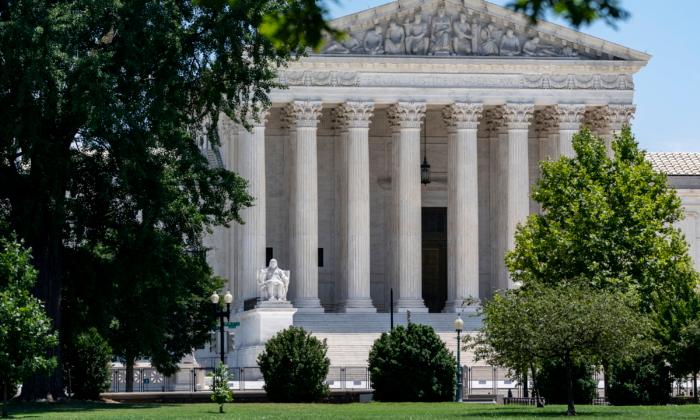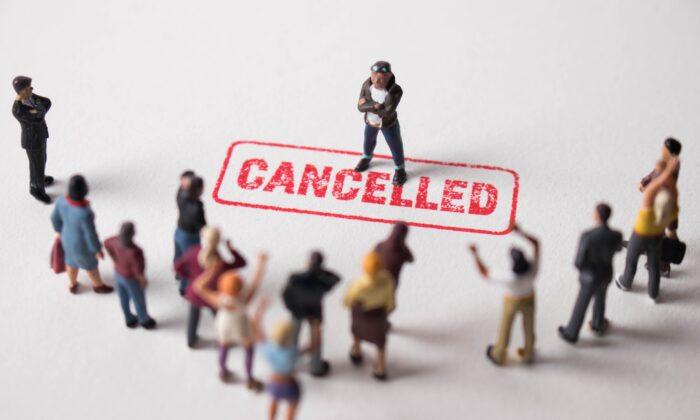Commentary
The Supreme Court has been making a lot of controversial decisions lately, but one upcoming decision that could have a great impact on American innovation isn’t getting much press.
The legal basis for U.S. intellectual property (IP) rights is found in Article I, Section 8 of the Constitution. The Founding Fathers believed that IP rights were so important that they passed the Patent Act of 1790 even before passing the Bill of Rights a year later. Even before African Americans had freedom, they could
obtain patents and profit from their inventions and writings. Before women could vote, they could
write articles, pamphlets, and books to influence society and retain the rights to those writings.
In 2014, the Supreme Court ruled in
Alice v. CLS Bank that software is patentable, but then proceeded to say that any process that didn’t include hardware was essentially not patentable. Even judges on the Federal Circuit were confused.
Academics, who generally supported this Supreme Court ruling, said not to worry. Software can always be protected by copyright. That was the essence of arguments by renowned law school professors
Pamela Samuelson at Berkeley and Mark Lemley at Stanford (
pdf).
Then came the case of
Oracle v. Google in which Oracle proved that Google copied 11,500 lines of software code from Java, a programming language built by Sun Microsystems (a company later purchased by Oracle). At its release, Java was the fastest-growing programming language in computer history, used to control most internet-based computer servers. When Google released its Android operating system, it didn’t want to train programmers in new application programming interfaces (APIs), so it decided to use the ones that most programmers already knew, the Java APIs. Google in internal emails acknowledged this misappropriation and admitted that it was supposed to pay a license fee to Sun Microsystems. But Google, one of the most highly valued companies in world history, decided not to pay the fee and just copied the APIs. Android became a huge success. Google argued that its copying was “fair use.”
Fair use is a legal doctrine that allows authors to copy others’ works for purposes of criticism, comment, news reporting, teaching, scholarship, or research. In other words, a teacher is allowed to hand out copies of “Harry Potter and the Sorcerer’s Stone” if using it to teach English literature. A college student can quote sections of the book “Racist Baby” in her thesis on the book. A news show can show a clip of the movie “Rust” if it’s part of a story on gun control.
The Federal Circuit ruled that Google’s copying wasn’t fair use. However, the Supreme Court ruled differently (
pdf), declaring that Google’s copying was fair use. Why? Android has become the most widely used smartphone operating system. In essence, the Supreme Court said it was fair use because so many people were better off from Google’s use of the code. In other words, you can steal your neighbor’s television if you set it up in the public square for everyone to watch.
When did this philosophy become law in America? For a scathing, brilliant, and legally comprehensive argument about the absurdity of this ruling, read Justice Clarence Thomas’s dissent (
pdf). But this new understanding of fair use is now the law of the land.
And now comes along the case of
Andy Warhol v. Goldsmith, which the Supreme Court has agreed to hear in October. In 1984, artist Warhol created a series of artworks based on a photograph of the singer Prince taken by photographer Lynn Goldsmith without Goldsmith’s permission. Although the Supreme Court said its fair use analysis only applied to software, there’s nothing software-specific in its detailed arguments. Given the fact that Warhol was one of the most successful and recognized artists in the 20th century, if the Supreme Court is to be consistent, it must say that a large section of the public was served by Warhol’s copying, and it was, therefore, fair use.
Maybe there’s a silver lining to such a bad decision that could all but kill creativity in the United States among artists, writers, inventors, and computer programmers. Politicians also don’t understand technology. Politicians in both parties have been passing laws to kill IP rights for technology, such as the
America Invents Act of 2013 and the recently proposed
Restoring the America Invents Act that goes even further in weakening our IP rights. But most people appreciate art and support struggling artists, so this could be an incentive to pass laws to protect artists’ IP rights. And if the laws are written broadly enough, they will inadvertently also support computer programmers and other inventors.
Otherwise, American ingenuity and innovation in tech are on their way out, while China’s ingenuity and innovation in tech are on the upswing, aided by their stealing of U.S. intellectual property, and by our own courts and legislatures weakening our IP protections.
Views expressed in this article are opinions of the author and do not necessarily reflect the views of The Epoch Times.





